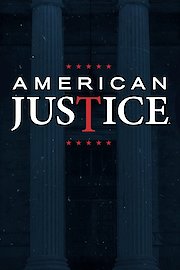In the third episode of the 1998 season of American Justice, titled "The John Lennon Assassination," the show examines the tragic murder of the legendary musician and peace activist. On December 8, 1980, John Lennon and his wife Yoko Ono were returning to their New York City apartment at the Dakota building when Mark David Chapman approached and shot Lennon in the back four times. The episode explores the events leading up to the murder, the investigation, and the trial of Chapman.
Through interviews with detectives, prosecutors, journalists, and eyewitnesses, the show provides a comprehensive and detailed account of the murder and its aftermath. The episode begins by examining Chapman's motives for killing Lennon, which included a desire for fame, an obsession with "The Catcher in the Rye," and a belief that he was on a mission from God. It also delves into his troubled past, including his mental health issues and his history of violence.
The episode then turns to the investigation, which was led by the New York City Police Department's Homicide Task Force. Detectives quickly identified Chapman as the shooter and tracked him down in the vicinity of the crime scene. His trial featured dramatic moments, including Chapman's unexpected change of plea to guilty and the emotional testimony of Yoko Ono. The episode analyzes the prosecution's case against Chapman, including the use of forensic evidence to link him to the crime.
In addition to the details of the murder and the investigation, the episode also explores the impact of Lennon's death on his fans and the broader cultural landscape. It features interviews with music journalists and historians who reflect on Lennon's influence and legacy, and explores the reactions of his fans around the world.
Overall, "The John Lennon Assassination" offers a vivid and compelling account of one of the most shocking crimes of the 20th century. By providing a detailed examination of the murder, the investigation, and its cultural impact, it sheds light on the complex factors that led to this tragedy and reflects on its continued resonance in popular culture.
-
Genres
-
Channel
-
First AiredFebruary 25, 1998
-
LanguageEnglish

-
 Free Trial on A&E Crime Central
Free Trial on A&E Crime Central
-
 Custom Recommendations
Custom Recommendations
-
 Share with Your Family
Share with Your Family


 Free Trial on A&E Crime Central
Free Trial on A&E Crime Central
 Custom Recommendations
Custom Recommendations
 Share with Your Family
Share with Your Family
